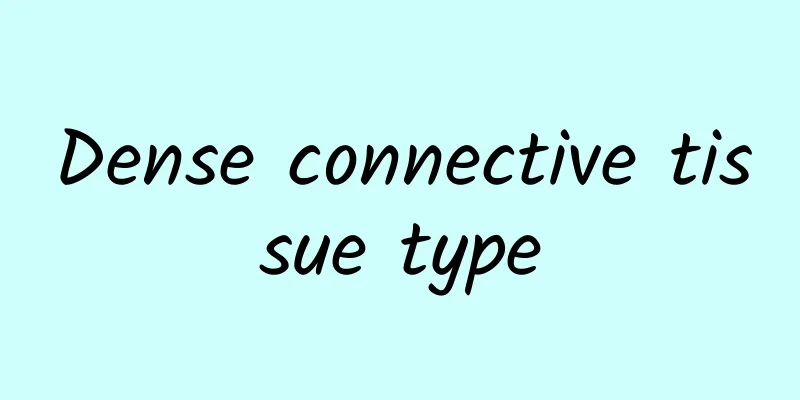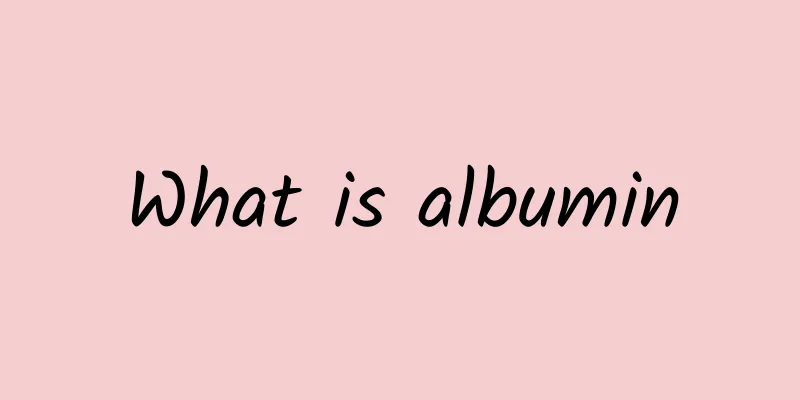Dense connective tissue type

|
A healthy body can improve the quality of life. Therefore, many patients with dense connective tissue diseases want to fully understand the types of this disease and its experiments in order to prevent the disease from affecting their health and normal life. In order for you to have a comprehensive understanding, let's take a look at the detailed introduction below. Dense connective tissue is a type of intrinsic connective tissue with fibers as its main components. The fibers are thick and densely arranged, and its main functions are support and connection. According to the properties and arrangement of fibers, they can be divided into the following types. 1. Regular dense connective tissue mainly constitutes tendons and aponeurosis. A large number of dense collagen fibers are arranged in parallel bundles along the direction of force, with very few matrix and cells located between the fibers. The main cellular components are tendon cells, which are a type of fibroblast with a special morphology. The cell body extends multiple thin wing-like processes and inserts between the fiber bundles. The nucleus is flat and oval and dark in color. 2. Irregular dense connective tissue is found in the dermis, dura mater, sclera and the membranes of many organs. It is characterized by thick collagen fibers of different directions interwoven into a dense lamellar structure, with a small amount of matrix and fibroblasts between the fibers. 3. Elastic tissue Elastic tissue is a dense connective tissue mainly composed of elastic fibers. The thick elastic fibers are either arranged in parallel bundles, such as the nuchal ligament and the yellow ligament, to accommodate spinal movement; or woven into membranes, such as the elastic tunica media of arteries, to buffer blood flow pressure. There are also some parts of the body with connective tissue and dense fibers, and a large number and variety of cells, which are often called dense connective tissue, such as the connective tissue of the digestive tract and respiratory tract mucosa. Dense connective tissue test Dense connective tissue - Demonstration: Section 23 Take the tendon of the animal, cut it longitudinally, and stain it with hematoxylin-eosin. Tendons are regular, dense connective tissues. Under a microscope, tendons are composed of many parallel and closely arranged collagen fiber bundles (stained bright red) and tendon cells (stained blue). Note that the tenocytes are arranged in single files between the fiber bundles. The cross section is long and fusiform, with an oval or liver-shaped nucleus. The nuclei of two adjacent cells are often very close. Dense connective tissue types and experiments. For patients with this disease, they must go through the above introduction to fully understand the types of this disease and its experiments. After a comprehensive understanding, choose a large hospital and carry out effective treatment through meticulous treatment. I believe that through treatment, they will be able to recover as soon as possible. |
<<: What are the anti-tumor pharmacology of traditional Chinese medicine?
>>: What is the knowledge about vaccination?
Recommend
Is blood in urine menstruation?
It is quite common for women to have blood in the...
What to do if you have irregular menstruation due to liver depression and qi stagnation
When the liver is depressed and qi is stagnant, i...
What to do if you feel tired during pregnancy?
Pregnancy is a very difficult thing. Not only do ...
What to do if you have a wart on your neck
Everyone thinks that viruses are particularly sca...
Side effects of Sedum sedum
Sedum notoginseng is a very commonly used medicin...
What to do if you lose your hair during chemotherapy
Cancer is a very scary disease. We currently do n...
What are hemodynamic monitoring indicators?
Blood is a very important part of the human body....
What is normal blood pressure?
Whether a person's blood pressure is normal d...
What Chinese patent medicine should I take for spleen deficiency and dampness?
Spleen deficiency and dampness obstruction is a d...
The best Chinese herbal medicine for lowering uric acid
High uric acid levels often cause symptoms of gou...
Can you tell from your stomach problems by massaging your feet?
With the development of the economy, people's...
Four TCM tips to help you eliminate kidney toxins
The kidneys are important organs in the human bod...
What causes muscle strain?
In people's daily life and work, there will b...
Gallstones Chinese Medicine Diagnosis
Gallstones are usually detected only in serious c...
No big moves are needed to maintain health, just small tongue movements can do the trick
Traditional Chinese medicine has attached great i...









